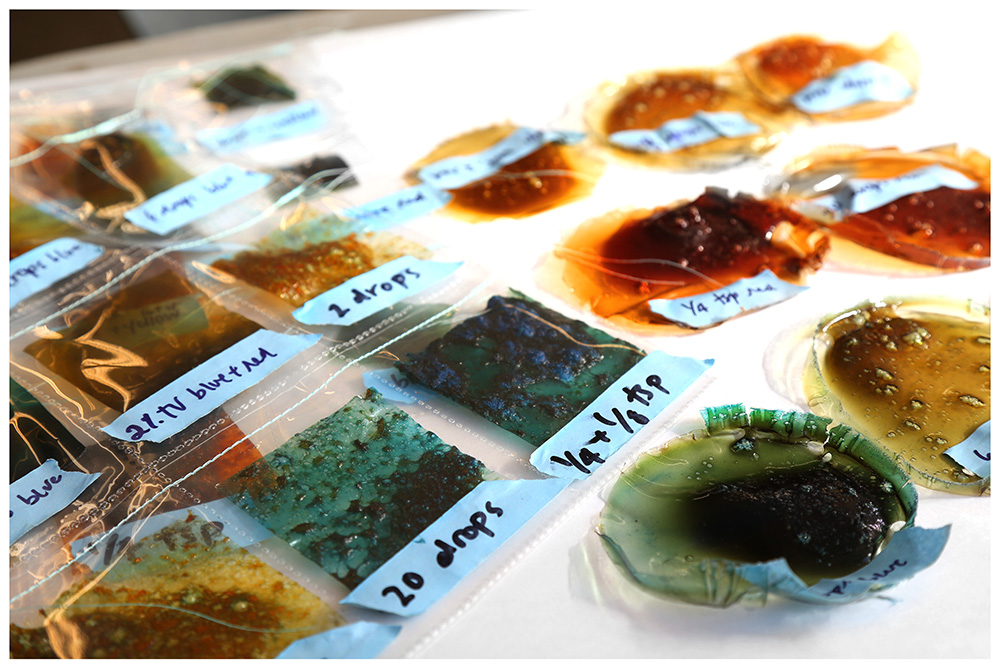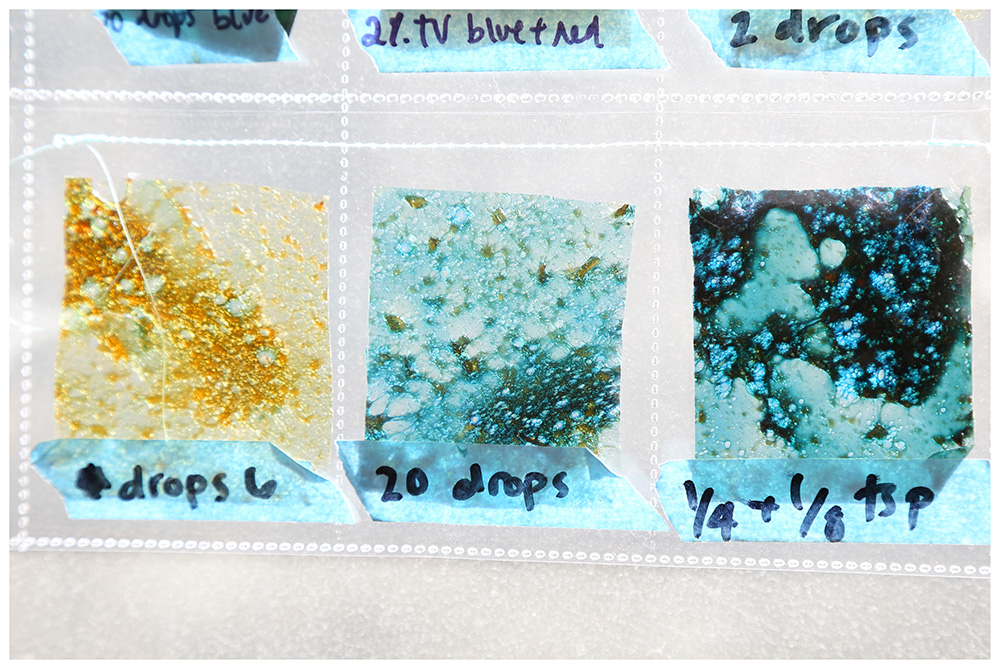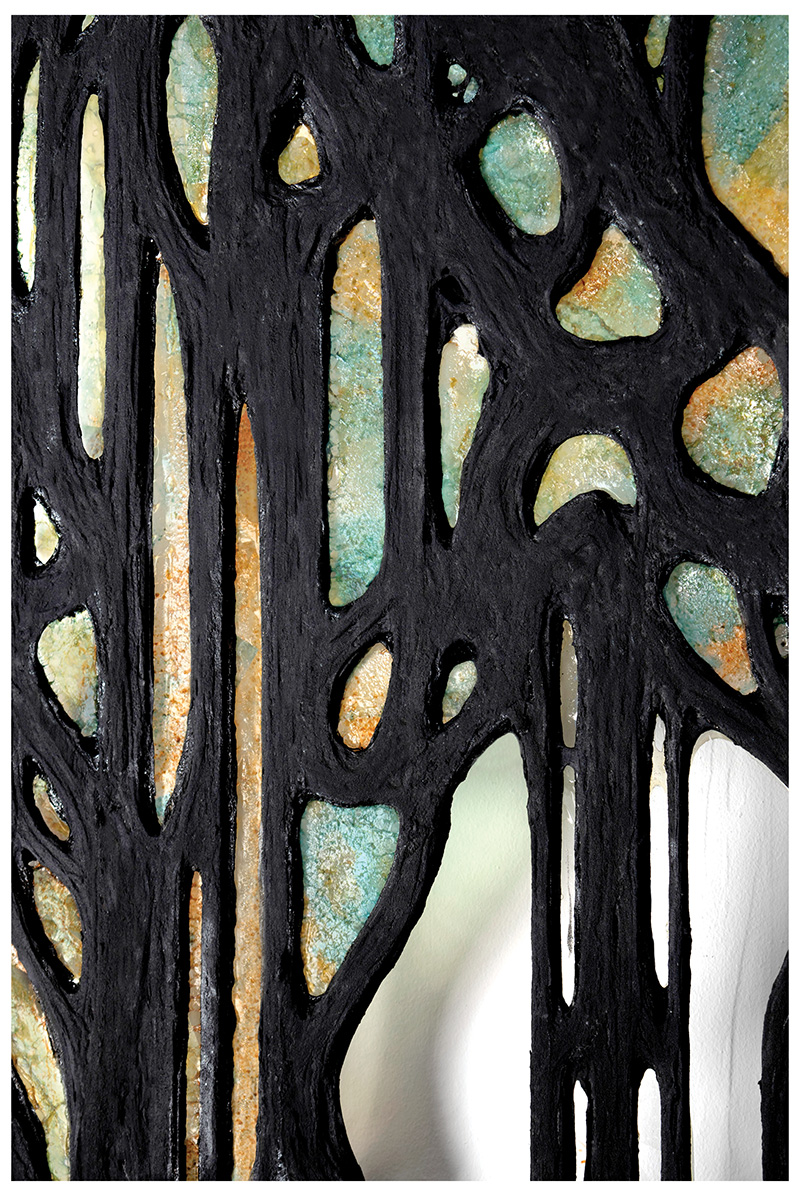Florascreen
SUTHERLIN SANTO X SASHA FISHMAN︎
FROM BIOLOGICAL FORM TO DIGITAL DATA,
THEN BACK AGAIN
As a biodegradable object made from the polymers of biological forms, Florascreen embodies the impermanence of nature and its varying states of change. This work, particularly the process through which it was designed and made, served as a platform to explore the concept of biological transmutation through the hybridization of technological and artistic methods of creation.
These diagrams illustrate the sequence of techniques – both analog and digital, hand and machine, natural and synthetic – that were used in the translation of biological forms into Florascreen. Florascreen is comprised of a 3D printed cellulose biopolymer frame which is infilled with a delicate chitosan film, colored with algae-derived pigments.
![]()
To develop Florascreen, analog and digital, hand and machine, natural and synthetic techniques were utilized in the translation of biological forms into the final work. Using an artificial neural style transfer, graphic linework of a floral arrangement was algorithmically revealed, transferring the 'style' of the sample onto the compositional architecture of an image taken of the floral arrangement. The network was then used to iteratively refine the styled result until a clear compositional hierarchy was revealed in the new, translated and 'styled' image. Raw linework was then captured and optimized for biogel 3D printing through an automated process using pixel data to produce robotic toolpaths.
A library of novel biodegradable materials derived from a family of bio-based polymers was developed specifically to fabricate Florascreen, intended to evoke the vibrancy and impermanence of the floral arrangement from which its design was translated.
Chitosan – a biopolymer derived from shellfish exoskeletons – was selected for its translucency and film-like characteristics.
Cellulose – a biopolymer sourced from plant cell walls – was explored for use as a structural framework.
The resulting material library exhibits a range of textures and color vibrancy achieved by adding algae-based pigments to the formulas and many samples exhibit holographic surface effects achieved during the process of making from complex micro-patterns formed naturally through the reaction of fluids.
After the material samples were characterized and cataloged, a pallet of chitosan formulas was chosen for the samples' translucency and visual richness to infill openings within the cellulose-based frame.
![]()
Florascreen was 3D printed on a large format CNC gantry in separate stages, allowing for intuitive, artistic, and tactile interventions by hand during the predominantly digital extrusion process.
Printed as liquid and gels, the biopolymer materials flowed and settled after 3D printing in ways that deviated from digital simulation and, therefore, necessitated digital scans to be taken of the piece in order to precisely 3D print with additional multiple materials at subsequent stages.
This work – particularly the process through which it was designed and fabricated – served as a platform to explore the concept of biological transmutation through the hybridization of technological and artistic methods of creation.
Florascreen
Sutherlin Santo X Sasha Fishman
7.5' x 4.25' x 2" (230cm x 130cm x 5cm)
Chitosan, cellulose, algae pigments
2022-2023
Algae pigment / spirulina provided by Spira Inc.
.
These diagrams illustrate the sequence of techniques – both analog and digital, hand and machine, natural and synthetic – that were used in the translation of biological forms into Florascreen. Florascreen is comprised of a 3D printed cellulose biopolymer frame which is infilled with a delicate chitosan film, colored with algae-derived pigments.

To develop Florascreen, analog and digital, hand and machine, natural and synthetic techniques were utilized in the translation of biological forms into the final work. Using an artificial neural style transfer, graphic linework of a floral arrangement was algorithmically revealed, transferring the 'style' of the sample onto the compositional architecture of an image taken of the floral arrangement. The network was then used to iteratively refine the styled result until a clear compositional hierarchy was revealed in the new, translated and 'styled' image. Raw linework was then captured and optimized for biogel 3D printing through an automated process using pixel data to produce robotic toolpaths.
A library of novel biodegradable materials derived from a family of bio-based polymers was developed specifically to fabricate Florascreen, intended to evoke the vibrancy and impermanence of the floral arrangement from which its design was translated.
Chitosan – a biopolymer derived from shellfish exoskeletons – was selected for its translucency and film-like characteristics.
Cellulose – a biopolymer sourced from plant cell walls – was explored for use as a structural framework.
The resulting material library exhibits a range of textures and color vibrancy achieved by adding algae-based pigments to the formulas and many samples exhibit holographic surface effects achieved during the process of making from complex micro-patterns formed naturally through the reaction of fluids.
After the material samples were characterized and cataloged, a pallet of chitosan formulas was chosen for the samples' translucency and visual richness to infill openings within the cellulose-based frame.

Florascreen was 3D printed on a large format CNC gantry in separate stages, allowing for intuitive, artistic, and tactile interventions by hand during the predominantly digital extrusion process.
Printed as liquid and gels, the biopolymer materials flowed and settled after 3D printing in ways that deviated from digital simulation and, therefore, necessitated digital scans to be taken of the piece in order to precisely 3D print with additional multiple materials at subsequent stages.
This work – particularly the process through which it was designed and fabricated – served as a platform to explore the concept of biological transmutation through the hybridization of technological and artistic methods of creation.
Florascreen
Sutherlin Santo X Sasha Fishman
7.5' x 4.25' x 2" (230cm x 130cm x 5cm)
Chitosan, cellulose, algae pigments
2022-2023
Algae pigment / spirulina provided by Spira Inc.
.












